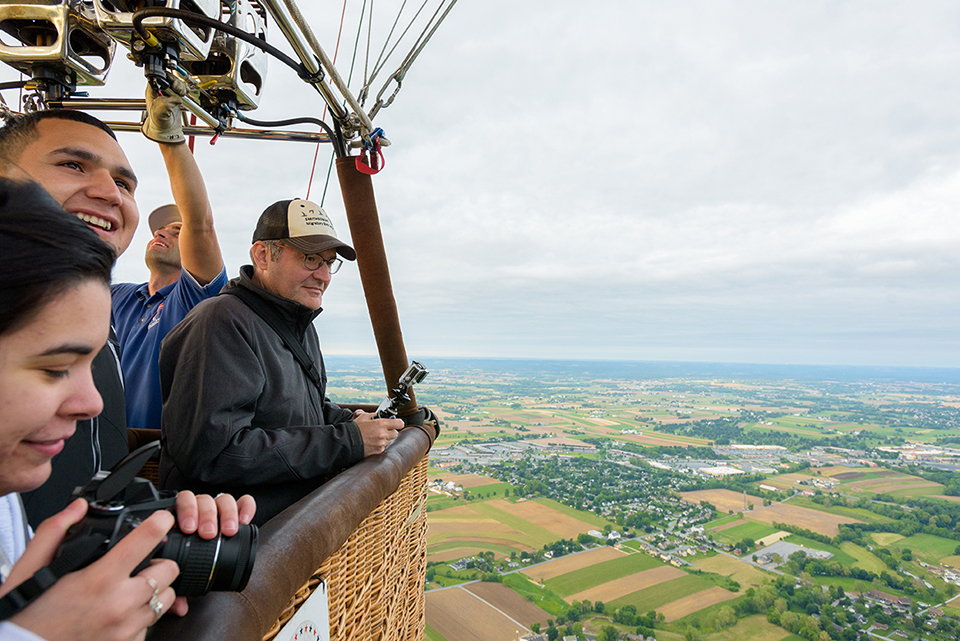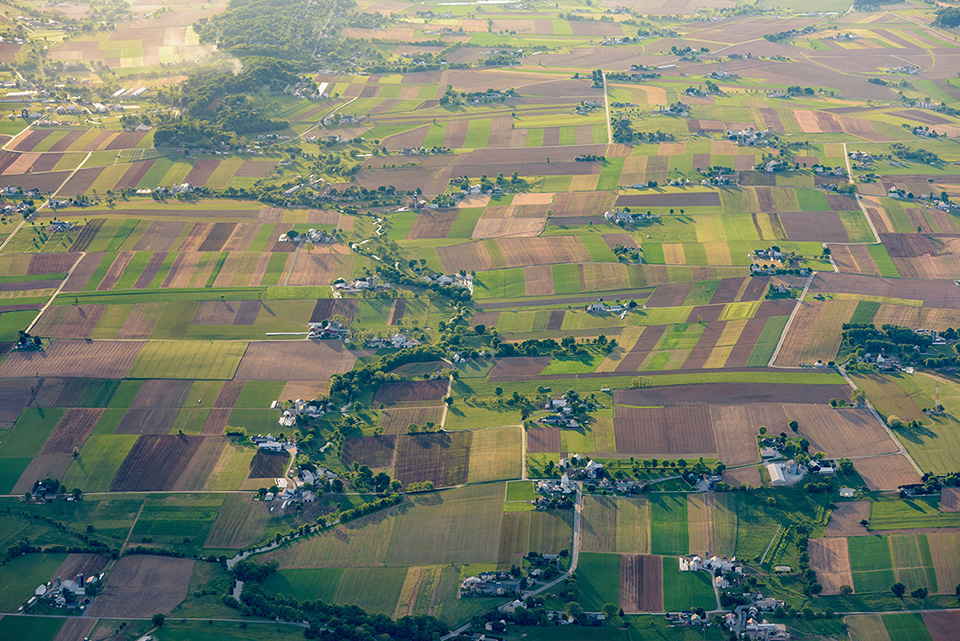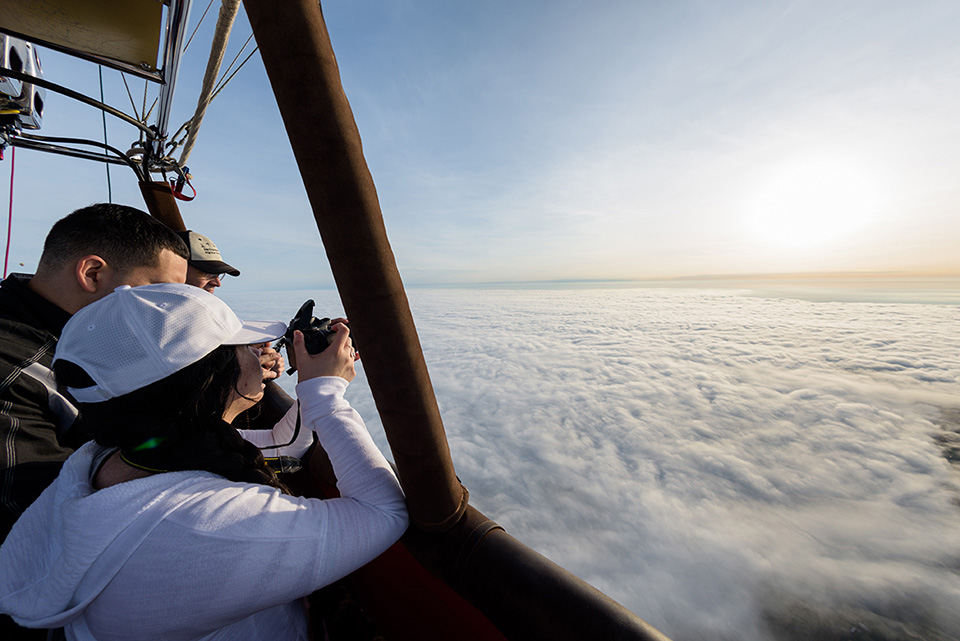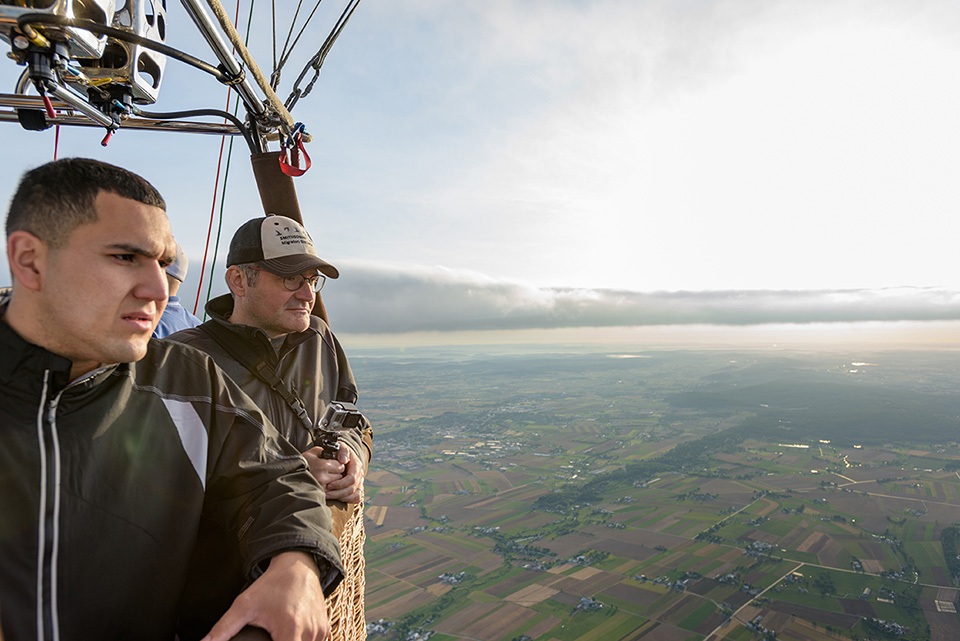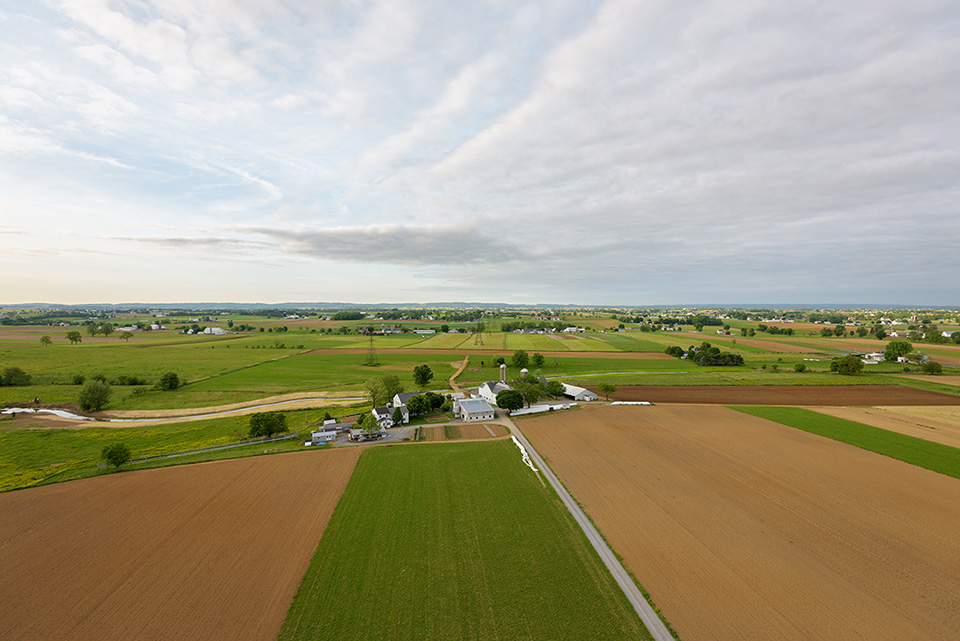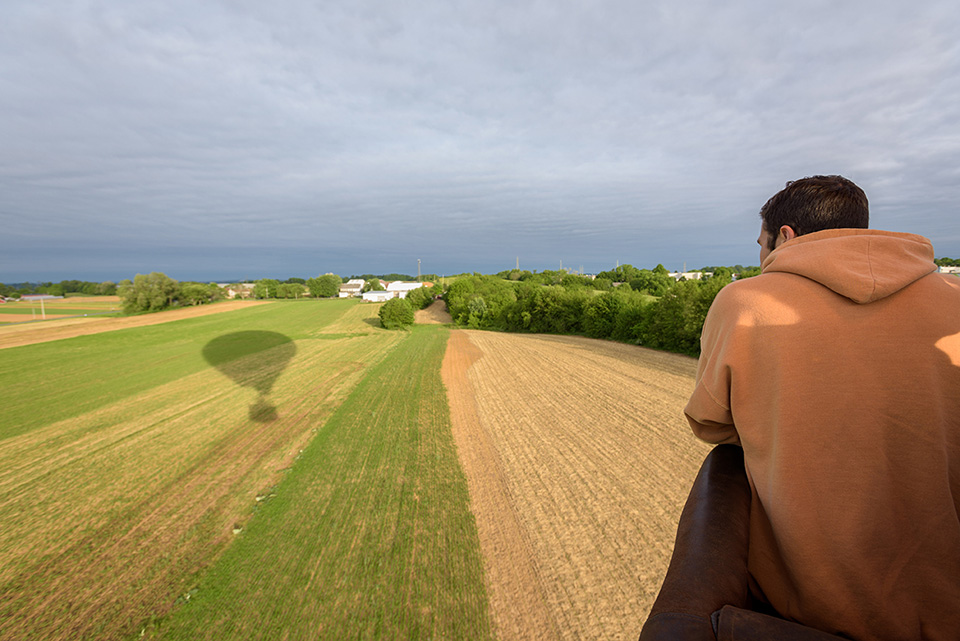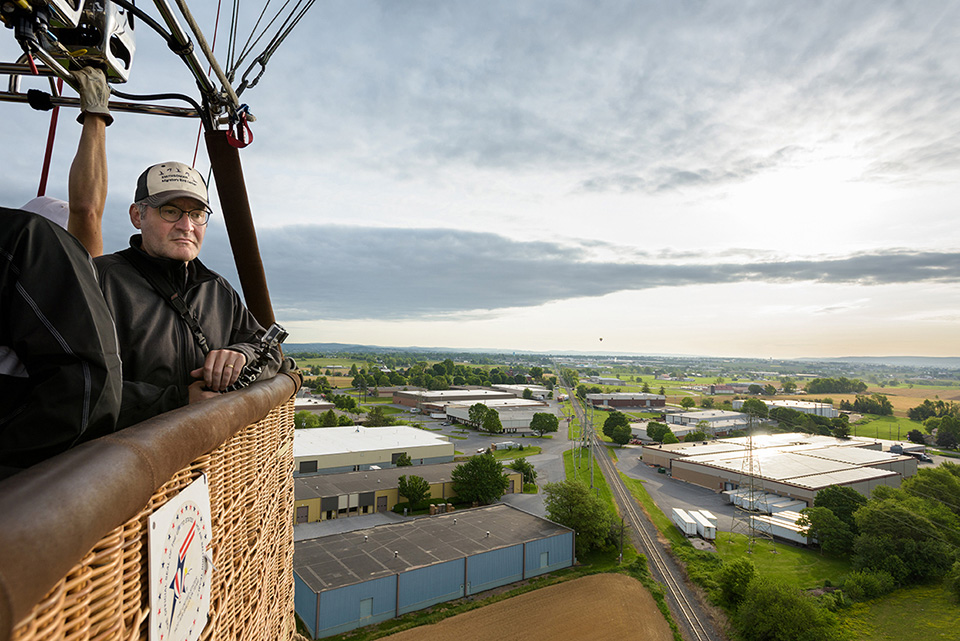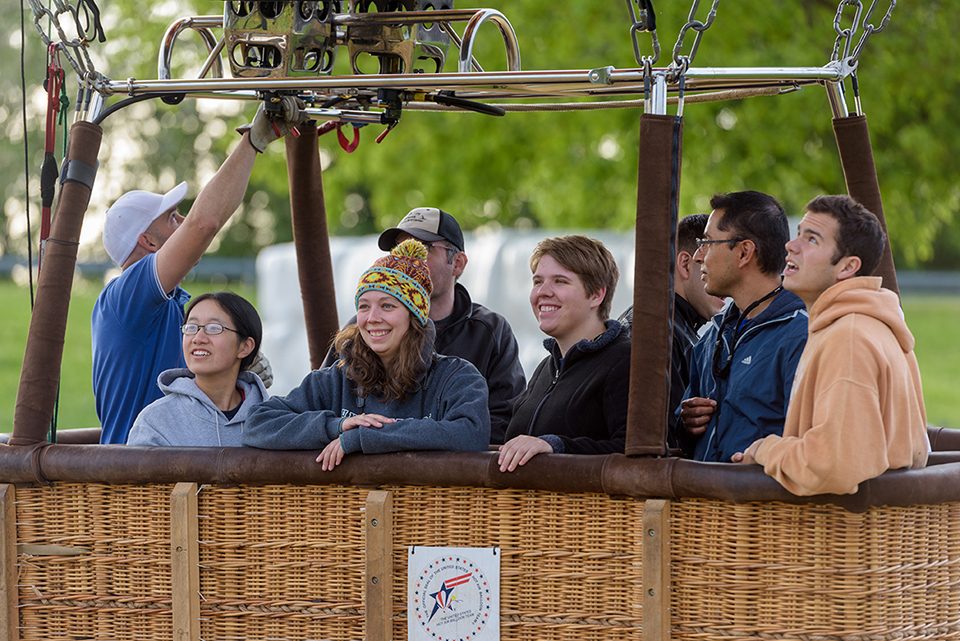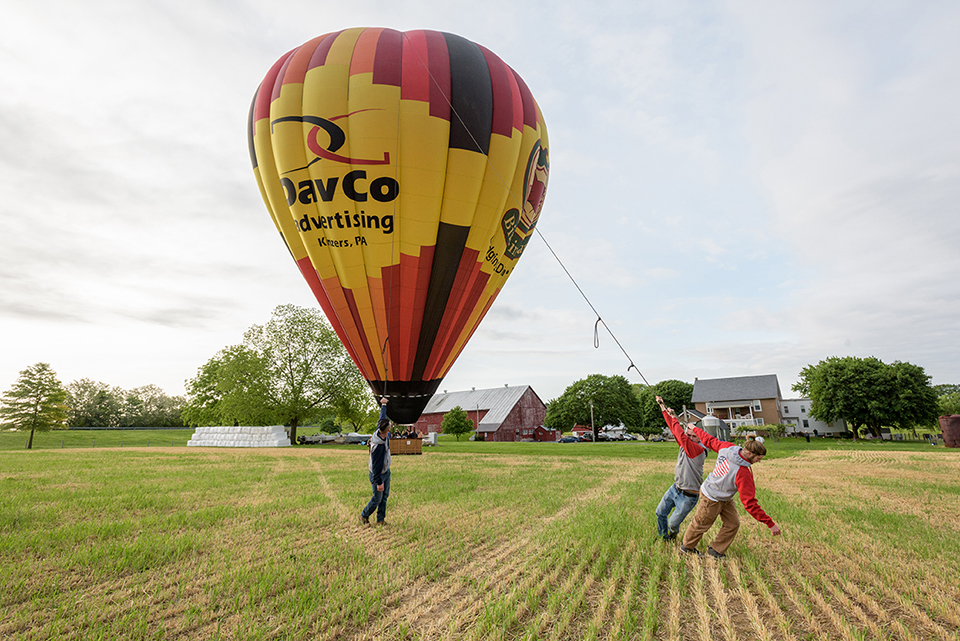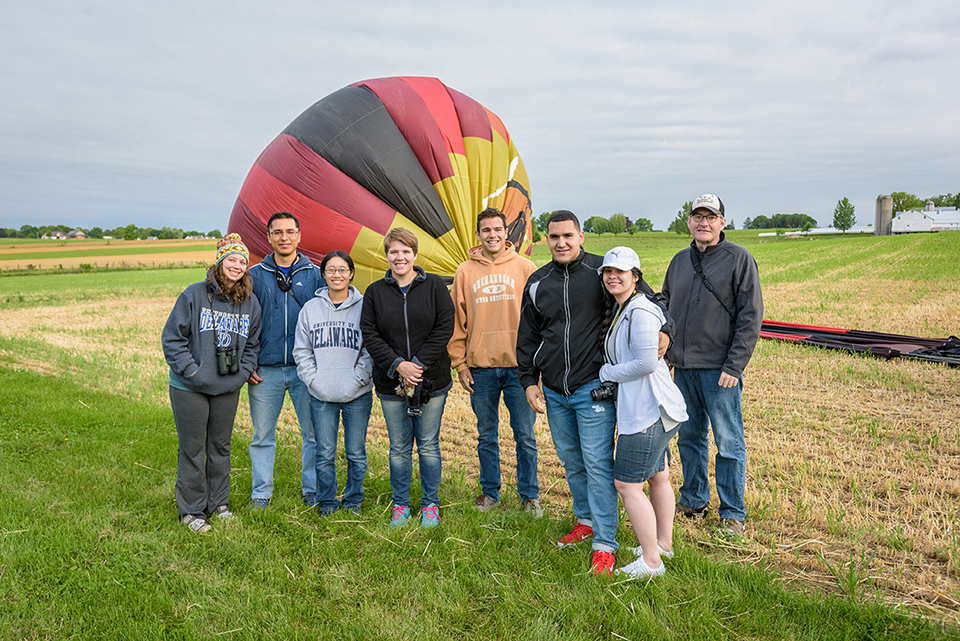

Aerial education
Photos by Evan Krape June 13, 2017
UD’s Buler takes class up in hot air balloon to study landscape ecology
To best understand landscapes and how different ecosystems interact with one another, sometimes it’s necessary to take a bird’s-eye view.
It was with that in mind that the University of Delaware’s Jeff Buler took students from his landscape ecology class up in a hot air balloon, so they could appreciate the inner workings of a landscape from the slow-moving confines of a hot air balloon basket.
“The purpose of the balloon trip was to give these students who are in the landscape ecology class a real-life landscape perspective. I thought the best way to provide that is to go up in a hot air balloon,” said Buler, associate professor in the Department of Entomology and Wildlife Ecology.
While there are other ways for the students to see a landscape from an aerial view — such as from a plane or via an aerial photograph or satellite imagery — Buler said that the finer details can be lost.
“When we were a mile up, you would look down and you could distinguish forest patches from agricultural fields. We could even see the Delaware Bay and the Susquehanna River and the skyline of Philadelphia from that height, so we got a really broad perspective,” said Buler. “As we came down to just maybe 100 feet above the ground, you get this sort of zooming in on the landscape as you descend, which reveals more and more detail as you come down.”
Among the interesting features the class was able to see were fields that had been plowed by tractors and those had been plowed by horses.
“Most of the farms were Amish farms that we’d fly over. We flew so low that we could actually tell they had been plowed by horses because you’d see the hoof marks in the fields, which of course you couldn’t see if you were higher up,” said Buler.
One of the things Buler wanted the students to get out of the trip was to be able to identify different landscape features, such as patches and edges and corridors, terms they talk about in class to characterize the landscape.
This being Buler’s second time taking a class up in a hot air balloon (a previous trip was made in the spring of 2014) he said that it was interesting to see how the landscape the class viewed this time differed from the landscape seen on the previous trip.
“It was a much more agricultural landscape than the other, which was more mixed and showed more of a gradient from rural to urban,” said Buler.
In the highly developed agricultural landscape, the students were able to see the connectivity of the environment, getting a nice view of natural features such as streams and riparian corridors along those streams that play an integral role in water quality within a watershed.
“Something that we talked a lot about in the course was how the water quality at one location is affected by inputs of pollution and other processes that are happening further upstream,” said Buler. “In this landscape, we were able to see streams that had nice intact riparian forest buffers but also other places where the farmers had cleared right up to the edge of the stream. It was a nice contrast to the last trip in that the students could better see how the stream networks were connected and where there were breaks in the riparian buffers that could be places where pollution could infiltrate.”
Buler said that going up in the hot air balloon reinforces lessons that the undergraduate and graduate students learn in his class, specifically about how diverse landscapes throughout space and time are of the upmost importance.
The class is also focused on managing habitat for wildlife, which has traditionally been done on a parcel by parcel basis, such as a piece of public land that is managed to create habitat for the species without consideration of how the larger landscape might affect what’s going on in that area.
“The class is designed to get students to think more broadly and recognize that the broader landscape is important. It’s important to think about how energy flows through the landscape, and to realize, especially from a wildlife perspective, that it is important to maintain connectivity among habitat patches,” said Buler. “You might be able to produce a very nice suitable habitat but you simply might not have the wildlife species there that you’re interested in because they can’t get there. There might be some barrier that prevents them from physically moving to that location. As we fragment landscapes more and more, it’s becoming a lot harder for wildlife to disperse through the landscape to be able to find suitable habitat.”
Contact Us
Have a UDaily story idea?
Contact us at ocm@udel.edu
Members of the press
Contact us at 302-831-NEWS or visit the Media Relations website

